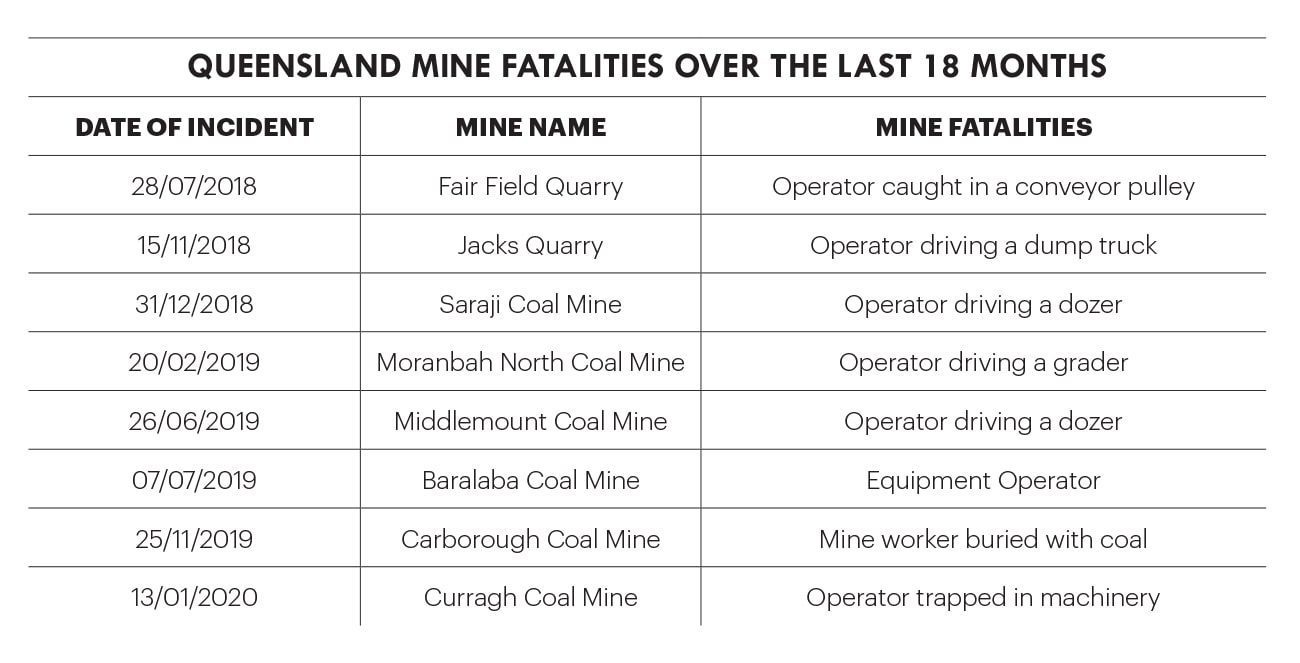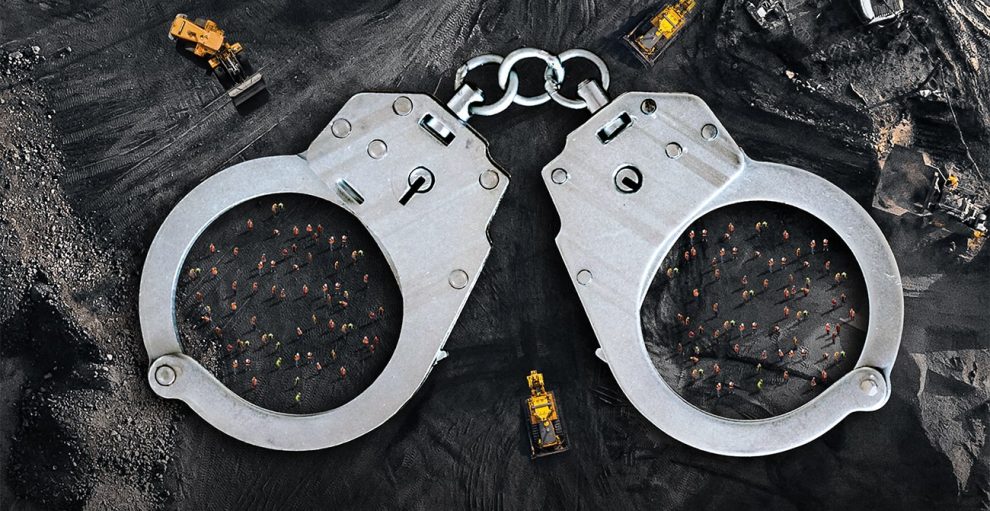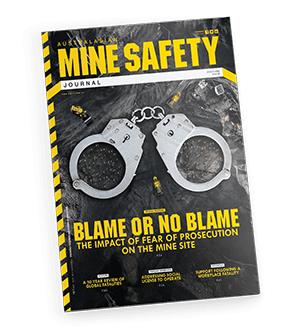Dr Ray Parkin OAM takes a look at the unprecedented level of Queensland mine fatalities and highlights the need for radical change in the industry.
The catalyst for this article is the 8 fatalities recorded in the Queensland Mining Industry over the past 18 months. This is the highest number of fatalities recorded in an 18 month period for over 20 years. Of the 8 fatalities, 2 occurred in Quarries and 6 in Coal mines. The 6 coal mine fatalities have occurred in just over 12 months.
These statistics are tragic and unprecedented; it is time for the industry to enact significant changes before safety goes further backwards in the Queensland Mining Industry. The Industry is in crisis mode and this situation is completely unacceptable. These fatalities are a catalyst for radical change in how the industry manages mining safety and indeed culture in the future.
IT CAN NO LONGER BE BUSINESS AS USUAL
A PhD research programme was completed in 2016 at the UNSW which aimed to improve the safety performance on mine sites. The outcomes of this research substantiates the author’s hypothesis that safety performance is not improving despite all the rhetoric in the industry.
This research was mainly undertaken because the mining industry has an unacceptable level of fatalities; people are still being killed and seriously injured on mine sites due to human behaviour factors, such as not complying with rules, procedures and management failings.
Another important reason is that accident investigations are currently not being conducted with a no blame culture.
A survey of the mining workforce was carried out at 21 Underground mines and 16 Open Cut mines in QLD and NSW. The questionnaire was made up of 56 questions on the following safety issues: workforce profile, general safety, risk assessments, safety & health management systems, fatigue, prosecution policies and FIFO. Just under 1200 responses were analysed and 80% of respondents were mineworkers. The main supporters were Peabody, Jellinbah, QLD & NSW mines rescue services, the CFMEU and industry personnel at all levels.
The main outcomes of this research are as follows:
- It has been agreed that if safety performance is going to improve in the Mining industry it needs to change the safety culture of the industry and implement programmes that achieve the objective of changing the attitudes and behaviour on mine sites.
- The survey results show that there is a lack of experienced personnel in the industry and that effective management of contractors continues to cause concern.
- Contractors are increasingly favoured by some mining companies over permanent employees because they are cheaper and many contractors are non-union-orientated and are less likely to raise safety concerns. Industry studies point to a link between a lack of safety in mines and the growth of contract employees in the industry.
- A lasting safety culture cannot be created with a mobile, temporary workforce and it is well known that a lack of job security makes it more difficult for people to speak up for their rights, particularly about occupational health and safety.
- To change the culture regarding prosecution policies so that legal privilege does not prevent the sharing of safety information.
- In the event of a serious incident or accident mining companies are advised by the legal profession to be very careful about generating reports about the incident or accident.
Employees are encouraged not to write written reports in relation to the incidents and accidents without prior approval of the manager, because they may be damaging the company’s legal position and the legal position of its employees, managers and directors.
Very often, the first person on the site of an accident or incident these days is the company lawyer who then effectively takes charge of the investigation with lock up of vital information.
“These fatalities are a catalyst for radical change in how the industry manages mining safety and indeed culture in the future.”
This problem is one of the main reasons the author carried out this research, since “How is it possible to investigate a fatality or serious injury if all the information to do so is not readily available”?
Near miss reporting, audits and high potential incidents are also subject to prosecutions which means that vital information is withheld and as a consequence not available in order to prevent a recurrence of the accident or incident.
More importantly, it moves away from the no blame culture.
A CFMEU senior safety person commented that two mining companies were prepared to share safety information at a recent Queensland Health and Safety Conference regarding two serious recent incidents in Queensland, but was stopped from doing so by the company lawyers (due to Legal Privilege).
In the event of a fatal or serious injury it is the overwhelming view in the industry that management personnel are guilty until they can prove their innocence, as opposed to civil prosecutions where they would be innocent until proven guilty.
Mine management wants the legislation to change such that in the event of a prosecution, management personnel are innocent until proven guilty, as is the case with civil prosecutions.
This would transform safety accident investigation so that the industry could return to a no blame culture.
54% of survey respondents agreed that prosecution policies should only be used as a last resort when willful and reckless disregard for safety is the case. The industry needs to take note of this result which indicates that the current prosecution policies need to be changed such as to allow all accident and incident information to flow freely and be able to share the lessons learned.

Over the last 18 months 8 mine workers have died, two in Quarries and 6 in Coal mines. The 6 coal mine fatalities have occurred in just 12 months.
This will have huge benefits for safety improvement in the industry and supports the author’s hypothesis.
50% of survey respondents believe that management influences affect the outcomes of risk assessments, which means that the risk assessment methodology may be manipulated in order to achieve a desired result. This situation goes against the principle that risk assessments should be conducted where all parties involved contribute in an unbiased manner in order to achieve a result which is truly representative of the parties involved with the risk assessment.
There are some concerns within the mining industry that risk management is not being properly or rigorously applied. Like many mature processes there is a risk of increasing complacency. There are examples where risk assessments appear to be done to reach an outcome and to avoid more work rather than control a risk.
70% of survey respondents agreed that more training should be allowed for the Safety & Health Management Systems.
Safety and Health Management Systems (SHMS) are now enshrined in legislation and consequently are part of the way forward. However in order to improve the implementation they need to be less complex and more easily understood by the average mine worker and the elements need to be standardised across industry. Most importantly, mine workers need to be trained in order that they understand their obligations under the SHMS.
“There are some concerns within the mining industry that risk management is not being properly or rigorously applied.”
This problem is further exacerbated by the large number of contract workers who are now employed in the industry and in some cases are moving from site to site on a regular basis.
66% of survey respondents agreed that accident investigation would best be conducted by mine management and the site safety & health representative and not legal people.
It has been shown that approximately 40% of the Australian workforce is in insecure work and that this creeping rise in insecure work is a detriment to mine safety improvement when considering labour hire, casualisation and contracting out.
The proposed introduction of industrial manslaughter legislation in Queensland may appease the general population, but it will do little for those who have recently buried their loved ones as a result of a mining accident.
These laws will drive safety underground such that people will not share safety information and as a consequence investigators of accidents will not have access to all the facts that could prevent a recurrence and moves away from a no blame culture.
Safety in our Mining Industry will continue to go backwards.
We must start and put safety first and ensure that the industry enforces a positive safety culture.
Check out AMSJ’s interview with Dr Ray Parkin here.
PROFILE
Dr RAY PARKIN
OAM. PhD. ME. FIMMM CEng. FAusIMM.
Ray Parkin is a senior professional with an extensive background in the mining industry both in the UK and Australia; in 2006 he was awarded the OAM for services to Mine Safety and Rescue. He was a panel member of the Wardens inquiry into the Mouradisaster. He has widely diversified skills across the industry. In late 2016 he completed a PhD at the University of New South Wales in Mine Safety.
















Unfortunately, to the extent this article is trying to grapple with legal processes, it is not correct. When the article says:
“In the event of a fatal or serious injury it is the overwhelming view in the industry that management personnel are guilty until they can prove their innocence, as opposed to civil prosecutions where they would be innocent until proven guilty.
Mine management wants the legislation to change such that in the event of a prosecution, management personnel are innocent until proven guilty, as is the case with civil prosecutions.
This would transform safety accident investigation so that the industry could return to a no blame culture.”
This is wrong.
Safety prosecutions are a a criminal process, and the findings are either guilty or not guilty based on a finding beyond a reasonable doubt, with the prosecution bearing the onus of proof. Managers are not guilty until proven innocent – this is simply wrong. Moreover, civil proceedings have nothing to do with guilt or innocence, they are simply based on findings for one party or the other based on the balance of probabilities.
To try and equate the two types of legal process in this way is misleading and misunderstands the fundamental nature of legal proceedings. It also ignores the problem at the heart of the issue – reliance on prosecutions themselves. It is unrealistic and naive to think that we can just continue to increase the individual and corporate liability for workplace accidents, and not expect those same parties to take full advantage of their legal rights.
If you want learning from workplace accidents, get rid of prosecutions altogether and replace them with a system designed to facilitate learning: https://www.waylandlegal.com.au/post/why-i-do-not-support-industrial-manslaughter
It is also fundamentally misleading to try and blame lawyers for the way information is, or is not produced. No doubt lawyers will advise managers to limit producing information which is damaging to their legal interests, That is the role of the lawyer and they would be negligent if they did otherwise. But the decision lies with managers and their companies. Legal Professional Privilege is not a lawyers right, it is the client’s privilege and it is up to the client to invoke, maintain or waive the privilege.
Dr Ray Parkin and all people working and Whistleblower within Queensland and SAFETY. What has happened? Why did five people get an explosion? Yes there is gas. Why? because the company in this site haven’t had electronic monitors within the mine? And yes this company may have killed other people in this mine? Why didn’t this company understand about SAFETY? Why didn’t try to understand about the earlier roof fall this year? O/K the qld government has had and talked about roof falls, but why didn’t this company did not install the monitors?
SAFETY……Why doesn’t this company use safety?
It is reprehensible five employees had an accident, not just the employers, but the family, their friends, the ambulance, the doctors, specialists, the aeroplane, police, there are hundreds of people that will think about these employers.
Yes close the Moranbah Anglo American mine until safety is impeccable, and yes prosecute the people within Anglo American, yes this is SAFETY.